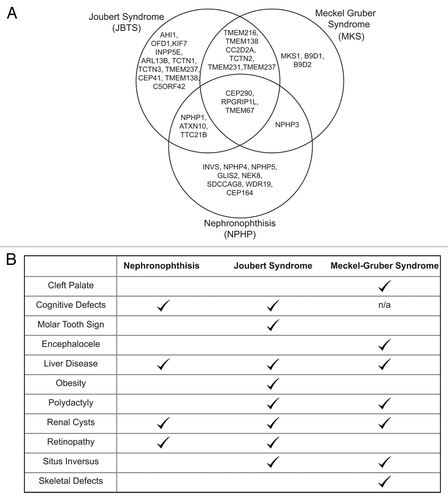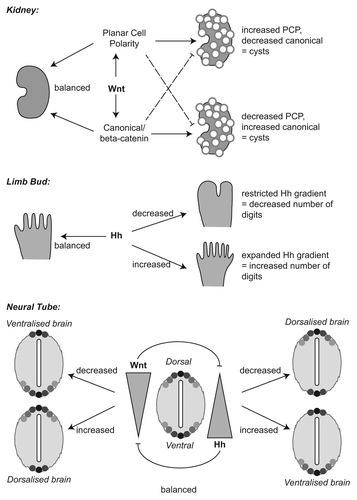Figures & data
Figure 1. Genetic and Phenotypic overlap in Ciliopathies. (A) Venn diagram to show the high degree of allelism in the genetic basis of Joubert syndrome, nephronophthisis, and Meckel-Gruber syndrome. (B) Table of clinical phenotypes in Joubert Syndrome, nephronophthisis, and Meckel-Gruber syndrome.

Figure 2. Hedgehog and Wnt Signaling in Kidney, Limb, and Neural Tube. A cartoon to show the effects of the Wnt signaling pathway on renal cystic disease, of the Hedgehog (Hh) pathway in the developing limb, and of both pathways in the neural tube. In the kidney, the balance between canonical (β-catenin dependent) and non-canonical Wnt signaling must be maintained; dysregulation of either branch, whether up- or downregulation, leads to development of cysts. In the limb bud, a gradient of Hh signaling is required to pattern the digits; where upregulation of Hh occurs, the gradient is expanded and additional digits are specified whereas when Hh is downregulated, the gradient becomes restricted and a reduced number of digits is specified. In the neural tube, a Wnt (and, to perhaps a greater extent, BMP) gradient is involved in dorsal cell fate determination; the gradient is counteracted by a ventral Hh gradient. Up- or downregulation of either pathway perturbs this balance and affects axis specification in the developing neural tube. Wnt signaling also has important effects on neuronal migration in the developing brain, leading to numerous other CNS effects.

